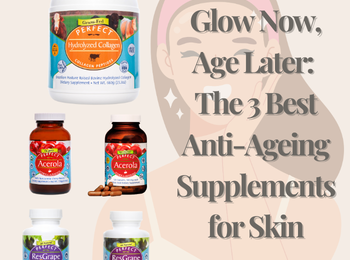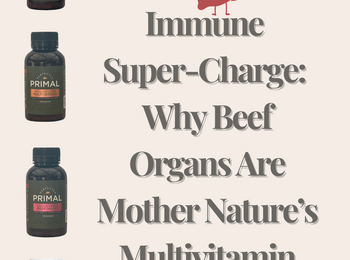Share
❄️ Cold Exposure: The Icy Reset
From cold showers to ice baths, cold exposure has exploded in popularity for its ability to:
- Boost circulation
- Reduce inflammation and pain
- Improve mood (hello, dopamine!)
- Enhance recovery and metabolic function
But — this is important — cold therapy is not one-size-fits-all, especially for women and those with health contraindications and trauma histories.
🧠 Why Cold Water Is Said to "Reset" the Nervous System
*Not for everyone; see below
Short-term cold exposure creates a controlled stress response (sympathetic activation), which is often followed by a parasympathetic rebound (calming effect).
Done mindfully and with consent from the body, this process can:
- Expand your window of tolerance
- Help you better respond to life's stressors
- Train resilience — like a nervous system workout
🚨 Why It's Contraindicated for Some
Cold exposure is not for everyone — at least not right away.
It may worsen symptoms in people with:
- Nervous system dysregulation (e.g. trauma, burnout/adrenal dysfunction, chronic stress)
- PTSD or trauma history
- Chronic health conditions
- Pregnancy or postpartum
- Heart conditions, Raynaud's, or very low body fat
In these cases, it's not regulating—it's overwhelming. Keep that cold-plunging is still a form of stress on the body.
✅ Trauma-Informed Cold Exposure
Some trauma-informed practitioners do use cold therapy in healing, but only:
- In the right phase of recovery
- With professional guidance
- With slow, titrated exposure
Think of it like a gym for your nervous system:
You wouldn't hand a beginner a 100kg barbell — and you wouldn't dunk a dysregulated body into 5°C water expecting peace.
💡 Gentle Ways to Start:
- Cool cloths
- Contrast showers
- Brief cold rinses
- Somatic practices (vagal toning, breathwork) before adding cold
- Gradual exposure over weeks/months
⚠️ Temperature Matters
If you are not contraindicated, please see below for temperature guidelines:
- For women, around 12.8°C (55°F) is considered a safe, effective range.
- Men can often tolerate colder due to body composition and hormonal differences.
Start slow. Never force. Always listen.
🌀 The Feminine Nervous System Needs a Different Approach
Women's bodies are cyclical, and our stress response is hormonally influenced — especially during the luteal and menstrual phases.
Cold exposure can be empowering when done intuitively.
But overdoing it can disrupt hormonal balance and leave us feeling wired or drained.
I must admit, I jumped on the extreme bandwagon. I sat in 5–6°C water for up to 4 minutes because "experts" told me it was good. Sometimes, I felt energised… but often, I felt flat and depleted afterwards.
We live and learn — the lesson? Always trust your own inner wisdom.
Be guided, not goaded. Choose practices that honour your body — not punish it.
Cold Water Therapy and Female Reproduction
It turns out that cold water therapy — when not done mindfully — may negatively impact female reproductive function. I found this quite surprising at first, but then I came across a study (conducted on rats, which is common in early health research). And while it wasn't on humans, many of our scientific understandings begin with animal models — so it made me notice.
The study I'm referring to suggests that cold exposure can interfere with normal follicle development, an essential part of healthy female reproductive function. While the body may try to compensate for this disruption through mechanisms like POAT (peri-ovarian adipose tissue) browning and cellular pathway activation (AMPK–PGC1α–Fndc5), the fact that this compensation is necessary could indicate that cold exposure puts stress on the reproductive system.
🔍 What This Might Mean:
- Follicle development disruption could affect ovulation, menstrual cycles, and overall fertility.
- POAT browning and related metabolic shifts are adaptive, but they signal that the body is responding to an environmental stressor — in this case, cold.
While cold exposure may benefit metabolism and resilience, it may not be ideal during sensitive phases of the menstrual cycle or for women with hormonal imbalances or fertility concerns.
Why You Don't Want to Burn the brown fat of the POAT (as a woman):
Burning or excessively stimulating peri-ovarian adipose tissue (POAT) — a specific type of brown fat surrounding the ovaries — may not be wise, and here's why:
🧠 POAT Isn't Just Fat — It's Functional
- POAT plays a protective and regulatory role in female reproductive health.
- It helps insulate and support the ovaries, contributes to the local hormonal environment, and may even influence follicle development and ovulation.
❄️ Overstimulating POAT with Cold Exposure Can Disrupt Reproductive Balance
- Cold exposure triggers the browning of fat (turning white fat into brown or beige fat), including around the ovaries.
- This browning process activates metabolic pathways (like AMPK–PGC1α–Fndc5) that shift energy use and heat production — but, in doing so, may interfere with normal ovarian function.
- Some animal studies show that cold-induced POAT browning correlates with abnormal follicle development, suggesting a possible risk to fertility or hormonal health.
⚠️ Why Burning POAT May Be Harmful to Women:
- Ovaries are highly sensitive to environmental stress, including temperature shifts.
- If POAT is overstimulated or "burned off," it could disrupt the delicate microenvironment needed for healthy hormone production and cycle regulation.
- This may be especially problematic during perimenopause, post-birth, or when managing fertility issues.
🔚 Bottom Line
Cold therapy can be a powerful tool — for some. But for women, especially those who are trying to conceive, navigating hormonal imbalances, or moving through perimenopause, it must be approached with care.
The female nervous system isn't just a smaller version of a man's — it's cyclical, sensitive, and deeply impacted by hormonal shifts. What works for men (like intense cold plunges) isn't always supportive for women. We are not little men — and our bodies require a different, more intuitive approach.
✅ In Summary
Cold exposure can help regulate the nervous system — but only when your system is ready. You'll know you're ready when you feel emotionally steady, your sleep and stress are well managed, and you're not using cold to "force" resilience.
If you're constantly anxious, depleted, or in a trauma loop, cold immersion may do more harm than good. In those cases, gentle warmth and nervous system-nourishing practices are often a better place to start.
🤔 Final Thoughts
✨ Go slow.
✨ Honour your cycles.
✨ Trust your intuition more than someone else's protocol.
✨ Readiness isn't about toughness — it's about capacity.
You're not a little man. You're a powerful woman with a wise, sensitive body — and that inner knowing?
That's your superpower. 💛
References:
https://academic.oup.com/jcem/article/105/5/e1938/5798990
https://ovarianresearch.biomedcentral.com/articles/10.1186/s13048-021-00851-8
https://jps.biomedcentral.com/articles/10.1007/s12576-015-0371-x





